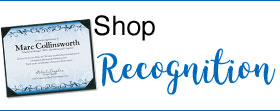
Business cards are often the first currency of a business transaction. You meet someone, decide to stay in touch, and exchange your contact details. But, in the digital age, what should you include on a physical business card? Just a hint: Fax numbers are out. QR codes are in. Now, let’s explore some options for what your business cards should include.
What to Include on Your Business Cards
The whole purpose of a business card is to remain memorable and initiate future contact. First, choose a card color and design that stands out and makes sense for your industry. Go beyond the classic white rectangle and pick a patterned rectangle, red circle or glossy metallic square.
Then, fill that teeny-tiny document with pertinent information. Here’s what we feel best showcases and keeps you top-of-mind with a new contact:
Pictures
Whether you choose a smiling headshot or an image of your key products for sale, visuals help jog the memory, making your conversation come to life each time the card is viewed.
Name
Of course, this one is obvious, but what you put after your name isn’t. Do include your job title and company. Your title should explain a bit about what you do, not just “Senior Executive” or “Owner”. For example, “Sami Hanson, Lead Photographer, Owner of Shutterbugs” is descriptive and accurate.
Social Media
Business connections on LinkedIn, Twitter and Facebook are expected. Include your handles or profile names alongside the corresponding social media icon. If you handle document transfers often, include Dropbox, OneNote, or your cloud service.
Phone Number
Which phone do you use all day long? Include that number. It’s common for many professionals to have a dedicated cell phone and no office phone.
This is probably the primary means of follow-up contact. Include your individual business email address prominently near your name and job title.
Website
The URL to your company’s website allows people to dig deeper and learn more about what you do. Don’t forget a logo if it’s a key branding feature of your business. Try implementing a QR code that directly links to your preferred online presence.
And don’t forget to leave a little breathing room. You don’t have to cover every inch of your business card with text or photos. Sometimes blank space makes an impact too!
What to Skip When Designing Business Cards
So, are you getting worried about what we didn’t mention? Don’t be. There are so many details that are auto-populated onto business cards that just don’t have the same impact they once had. For instance, when was the last time you received a fax that wasn’t spam?
So, get rid of:
- fax numbers
- physical addresses
- team email addresses
- unused landline office phone numbers
- maps to your physical location
- outdated social media including MySpace and messenger services
Is it time to update your business card? Browse the styles and ideas at PaperDirect, add your information, and we’ll get them printed and shipped to your office!



